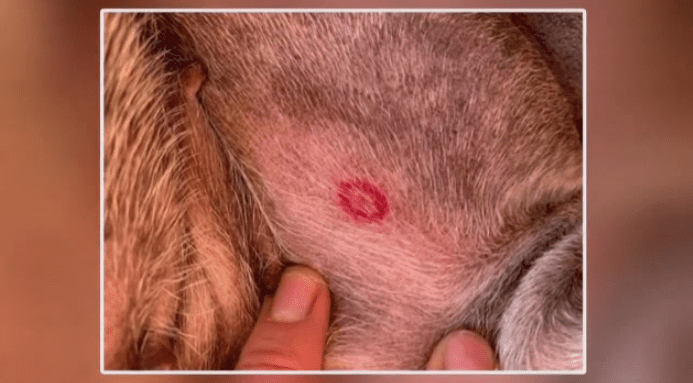Key Takeaways:
-
1. Cats are vulnerable to tick infestations and can contract serious illnesses from them.
2. Regularly checking for ticks on your cat's fur and skin is crucial for early detection and prevention.
3. Tick prevention methods such as using tick collars or spot-on treatments can significantly reduce the risk of infestation.
4. If you find a tick on your cat, it should be promptly and carefully removed using tweezers or a tick removal tool.
5. Seeking veterinary care if your cat shows symptoms of a tick-borne illness is essential for proper diagnosis and treatment.
Attention cat owners! Did you know that there are silent predators lurking in the shadows, waiting to attack your feline friends? These stealthy creatures go by the name of ticks, and understanding the dangers they pose is essential for keeping your furry companions safe. In this article, we will delve into the world of ticks and uncover why being aware of their presence is crucial. So, grab a seat and prepare to be amazed by the hidden threat that ticks pose to your beloved cats. Get ready to become a tick-fighting expert and ensure your cat's well-being!
The Main Topic of "Beware of Ticks: The Silent Predators on Cats"
Ticks are small, blood-sucking parasites that can be found in grassy areas, forests, and even in our own backyards. They are considered silent predators because they can latch onto cats without making a sound or being noticed. These tiny creatures have specialized mouthparts that allow them to attach themselves firmly to the skin of their host, such as a cat. Once attached, ticks will feed on the blood of the cat for several days before dropping off.
Why Ticks are Considered Silent Predators
Ticks are often called silent predators because they can attach themselves to cats without causing any pain or discomfort. Unlike fleas, which cause itching and irritation, ticks inject a numbing agent into the skin of their host so that they can feed unnoticed. This means that cats may not even realize they have ticks until there is a severe infestation.
Ticks are also adept at finding hidden spots on a cat's body to attach themselves. They prefer warm and moist areas such as the ears, armpits, groin, and between the toes. These areas can be difficult for cat owners to inspect regularly, allowing ticks to go undetected for long periods.
How Ticks Attach Themselves
Ticks have specialized mouthparts called chelicerae that allow them to anchor themselves firmly into the skin of their host. Their mouthparts consist of two hooked structures that pierce the skin and hold them in place while they feed on blood. Additionally, ticks secrete a cement-like substance from their salivary glands that helps them stay attached even when disturbed.
Signs Your Cat May Have Ticks
It's important to regularly check your cat for ticks as early detection can prevent serious health issues. Here are some signs that your cat may have ticks:
1. Visible ticks: Look for small, dark, or swollen bumps on your cat's skin. Ticks can range in size from a pinhead to a grape, depending on how long they have been feeding.
2. Excessive scratching or licking: If your cat is constantly scratching or licking a particular area, it could be a sign of irritation caused by a tick bite.
3. Restlessness or discomfort: Cats may become restless and exhibit signs of discomfort if they have ticks on their body. They may groom excessively, roll around on the floor, or try to scratch against furniture to alleviate the itchiness.
4. Hair loss or skin redness: Tick bites can cause localized hair loss and redness around the affected area. If you notice any patches of missing fur or irritated skin, it could be due to tick infestation.
Preventing Tick Infestations in Your Cat
Prevention is key when it comes to protecting your cat from ticks. Here are some measures you can take to prevent tick infestations:
1. Regular grooming: Brushing your cat's fur regularly helps remove any loose ticks before they have a chance to attach themselves.
2. Tick control products: Consult with your veterinarian about using tick control products such as topical treatments or collars designed specifically for cats.
3. Keep your surroundings clean: Ticks thrive in tall grass and wooded areas, so keeping your yard well-maintained by trimming grass and removing leaf litter can reduce the risk of tick exposure.
4. Avoid tick-infested areas: When taking your cat outdoors, try to avoid areas known for high tick populations such as dense forests or tall grassy fields.
5. Check yourself and your cat after outdoor activities: After spending time outside with your cat, thoroughly check both yourself and your pet for any signs of ticks before going indoors.
Diseases Ticks Can Transmit to Cats
Ticks can transmit various diseases to cats through their bites. Some common tick-borne diseases in cats include:
1. Lyme disease: This bacterial infection can cause symptoms such as lameness, fever, loss of appetite, and swollen lymph nodes.
2. Ehrlichiosis: Ehrlichiosis is a bacterial infection that can lead to symptoms like fever, lethargy, anemia, and bleeding disorders.
3. Babesiosis: Babesiosis is caused by a parasite transmitted by ticks and can result in symptoms such as pale gums, weakness, and fever.
4. Cytauxzoonosis: This potentially fatal disease is caused by a parasite spread by certain ticks. It can cause severe illness characterized by high fever, anemia, jaundice, and difficulty breathing.
What to Do If You Find a Tick on Your Cat
If you find a tick on your cat's body, it's important to remove it promptly and correctly to reduce the risk of disease transmission. Here are the steps to follow:
1. Use tweezers or specialized tick removal tools: Grasp the tick as close to the skin as possible with tweezers or a tick removal tool. Avoid squeezing or crushing the tick during removal.
2. Pull gently but firmly: Slowly pull the tick straight out without twisting or jerking it. Be careful not to leave any parts of the tick's mouth embedded in the skin.
3. Disinfect the area: Cleanse the bite site with antiseptic solution or rubbing alcohol after removing the tick.
4. Monitor for signs of illness: Keep an eye on your cat for any signs of illness in the weeks following tick removal. If you notice any unusual symptoms, consult your veterinarian promptly.
Remember that ticks are not only harmful to cats but also pose risks to humans and other pets. Taking preventive measures and regularly checking for ticks can help keep your cat safe and healthy.
Diseases Ticks Can Transmit to Cats
Ticks can transmit various diseases to cats, some of which can be quite serious. One common disease transmitted by ticks is called Lyme disease. This bacterial infection can cause symptoms such as fever, lameness, and loss of appetite in cats. Another disease that ticks can transmit is called Ehrlichiosis. This disease affects the white blood cells and can lead to symptoms like lethargy, weight loss, and anemia in cats. Additionally, ticks can also transmit Babesiosis, a parasitic infection that affects the red blood cells and may cause symptoms such as pale gums, weakness, and fever in cats.
Lyme Disease
Lyme disease is caused by a bacterium called Borrelia burgdorferi which is transmitted through the bite of infected ticks. When an infected tick bites a cat, it transfers the bacteria into the cat's bloodstream. The bacteria then multiply and spread throughout the body, leading to various symptoms. It is important to note that not all ticks carry Lyme disease, but it is still crucial to take preventive measures to protect your cat from potential tick bites.
Prevention Tips:
- Regularly check your cat for ticks after they have been outdoors.
- Use tick prevention products recommended by your veterinarian.
- Keep your cat away from areas with high tick populations such as tall grass or wooded areas.
- Consider vaccinating your cat against Lyme disease if you live in an area where it is prevalent.
Ehrlichiosis
Ehrlichiosis is another tick-borne disease that can affect cats. It is caused by different species of bacteria belonging to the Ehrlichia genus. When an infected tick bites a cat, it transmits these bacteria into the cat's bloodstream. The bacteria then invade white blood cells and replicate within them, leading to various symptoms. Ehrlichiosis can be challenging to diagnose as its symptoms can be similar to other diseases, so it is important to seek veterinary attention if you suspect your cat may have been exposed to ticks.
Prevention Tips:
- Use tick prevention products recommended by your veterinarian.
- Keep your cat indoors during peak tick season.
- Regularly groom your cat and check for any signs of ticks or tick bites.
- Maintain a clean and tick-free environment for your cat.
Babesiosis
Babesiosis is a parasitic infection caused by Babesia species that are transmitted through the bite of infected ticks. When an infected tick bites a cat, it injects the parasites into the cat's bloodstream. The parasites then invade red blood cells and reproduce, causing damage to these cells. This can lead to symptoms such as anemia, weakness, and fever in cats.
Prevention Tips:
- Use tick prevention products recommended by your veterinarian.
- Avoid areas with high tick populations.
- Check your cat for ticks regularly, especially after outdoor activities.
- Consider using environmental control measures such as keeping grass short and removing leaf litter where ticks may hide.
Remember, prevention is key when it comes to protecting your cat from tick-borne diseases. By taking appropriate preventive measures and promptly addressing any potential tick infestations or bites, you can help keep your feline friend safe and healthy.
What to Do If You Find a Tick on Your Cat
Identifying a Tick on Your Cat
When it comes to ticks, it's important to be able to identify them on your cat. Ticks are small arachnids that attach themselves to the skin of animals, including cats. They have round bodies and eight legs, and can vary in size depending on their stage of development. To check for ticks on your cat, run your fingers through their fur, paying close attention to areas such as the neck, ears, and underbelly where ticks often hide. If you come across a small bump or feel something hard and crusty, it could be a tick.
Removing a Tick Safely
If you find a tick on your cat, it's crucial to remove it as soon as possible to prevent any potential diseases or infections. Here's how you can safely remove a tick from your furry friend:
1. Prepare: Get a pair of fine-tipped tweezers and put on disposable gloves to protect yourself.
2. Grasp: Gently grasp the tick with the tweezers as close to your cat's skin as possible.
3. Pull: Slowly and steadily pull the tick straight out without twisting or jerking it.
4. Dispose: Place the tick in a sealed container or baggie filled with rubbing alcohol to ensure it is killed.
5. Cleanse: Cleanse the area where the tick was attached with mild soap and water or an antiseptic solution.
Remember, never try to remove a tick using your bare hands or by squeezing its body forcefully. This can increase the risk of disease transmission.
By following these steps, you can effectively remove ticks from your cat and minimize any potential harm they may cause.

Preventing Tick Infestations on Your Cat
Prevention is key when it comes to keeping your cat safe from ticks. Here are some measures you can take to prevent tick infestations:
1. Regular grooming: Brushing your cat's fur regularly helps you spot and remove any ticks before they become a problem.
2. Tick control products: Consult with your veterinarian about using tick control products such as topical treatments or collars that repel ticks.
3. Keep the environment clean: Regularly vacuum your home, especially areas where your cat spends most of its time, to eliminate any potential tick hiding spots.
4. Avoid tick-infested areas: If possible, keep your cat away from areas with tall grass, wooded areas, or places known for high tick populations.
By implementing these preventive measures, you can significantly reduce the chances of your cat getting infested with ticks.
Remember, ticks can transmit diseases not only to cats but also to humans. Therefore, staying vigilant and taking prompt action if you find a tick on your cat is essential for their well-being and the safety of your entire family.
In conclusion, ticks are dangerous parasites that can harm cats. It is important for cat owners to be aware of the risks and take preventive measures to protect their furry friends from these silent predators.
What kills ticks on cats instantly?
After removing the tick, promptly place it on a paper towel soaked in alcohol. The alcohol will rapidly eliminate the tick.
How do you get rid of ticks on cats naturally?
Use apple cider vinegar - You can utilize apple cider vinegar to eliminate and eliminate ticks on your cat. Combine it with water and neem oil and apply it to your cat, its bedding, and throughout your home. The ticks will disappear quickly.
Should you remove ticks from cats?
If you have concerns about doing this, consult your veterinarian for guidance. Ticks can transmit diseases, therefore it is crucial to promptly remove any ticks that attach to your cat.
How harmful are ticks to cats?
Lyme disease is the most well-known tick-borne illness, although it is not the most serious in terms of its effect on the cat population. It is a bacterial infection that can cause significant damage to the joints, heart, kidneys, and nervous system if not treated promptly.
What happens if you don't remove a tick from a cat?
Ticks can attach themselves to your dog or cat and feed on their blood for a few days before falling off. There is a risk that the tick could transmit Lyme disease, a bacterial infection, to your pet during this time. Lyme disease can affect dogs, cats, and humans, although it is rare in cats.
How long will a tick stay on a cat?
Ticks can attach to any part of your cat's body, but they often burrow into the face, neck, ears, feet, or legs. Once attached, a tick will stay until you remove it or until it becomes filled with blood after feeding for approximately 3 to 4 days, at which point it will drop off.

















